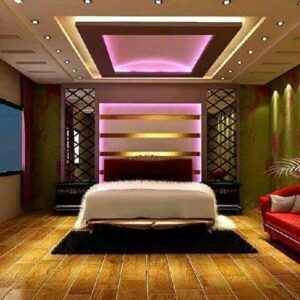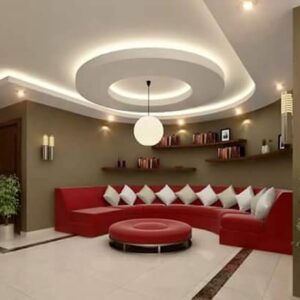“Harmony in Design: Unraveling the Interior Designer’s Working Process”
Introduction: Embarking on the journey to transform a space from ordinary to extraordinary involves a meticulous and creative process led by interior designers. In this blog, we’ll delve into the intricate working process of an interior designer, exploring the steps they take to weave magic into every corner.
Step 1: Discovery and Consultation: The process begins with a thorough understanding of the client’s vision, preferences, and lifestyle. In the initial consultation, interior designers aim to grasp the essence of the project. Discussions revolve around the client’s expectations, functional requirements, and the unique character of the space.
Step 2: Space Assessment and Analysis: Interior designers conduct a detailed analysis of the space, considering its architectural features, layout, lighting, and existing elements. This step is crucial for identifying opportunities and challenges within the space and laying the groundwork for the design concept.
Step 3: Conceptualization and Design Development: Armed with insights from the discovery phase, interior designers begin conceptualizing the design. This involves creating mood boards, sketches, and design concepts that encapsulate the envisioned aesthetic. Clients are presented with these initial ideas for feedback and refinement.
Step 4: Detailed Planning and Space Optimization: Once the design concept is approved, interior designers proceed to detailed planning. This phase involves space optimization, where layouts are meticulously planned to enhance functionality, traffic flow, and the overall user experience. Attention is given to furniture placement, storage solutions, and spatial harmony.
Step 5: Material and Color Selection: The selection of materials and colors is a pivotal aspect of the design process. Interior designers curate a palette that aligns with the client’s preferences and the overall design theme. Considerations include the durability of materials, their aesthetic appeal, and how they contribute to the intended ambiance.
Step 6: Budgeting and Cost Estimation: Transparency is key, and interior designers work closely with clients to establish a budget that accommodates their financial parameters. Cost estimations are provided for materials, furnishings, and labor, ensuring that the project stays within the agreed-upon budget.
Step 7: Collaboration with Contractors and Artisans: Interior designers collaborate with contractors, artisans, and craftsmen to bring the design to life. Whether it’s custom furniture, bespoke lighting, or intricate detailing, this collaborative effort ensures that the design vision is executed with precision and craftsmanship.
Step 8: Implementation and Project Management: As the project moves to the implementation phase, interior designers take on the role of project managers. They oversee timelines, coordinate deliveries, and address any unforeseen challenges. Effective project management is essential for ensuring a smooth and timely execution.
Step 9: Styling and Accessorizing: The final touches are added during the styling phase. Interior designers carefully curate accessories, artwork, and decorative elements that enhance the overall aesthetic. Attention to detail at this stage elevates the space, adding layers of personality and charm.
Step 10: Client Walkthrough and Finalization: The culmination of the working process involves a walkthrough with the client. Interior designers present the completed project, allowing clients to experience the transformation firsthand. Any final adjustments or additions are made based on client feedback, ensuring complete satisfaction.
Conclusion: Creating Timeless Spaces: The working process of an interior designer is a harmonious blend of creativity, collaboration, and meticulous planning. From the initial consultation to the final walkthrough, each step contributes to the creation of timeless and personalized spaces that reflect the unique essence of the clients and the designer’s artistic vision.
Frequently Asked Questions (FAQ) – Interior Designer Working Process
1. What is the first step in the working process of an interior designer? The first step in the working process of an interior designer is the discovery and consultation phase. During this stage, the designer aims to understand the client’s vision, preferences, and lifestyle. Discussions revolve around expectations, functional requirements, and the unique character of the space.
2. How does an interior designer assess a space during the working process? Interior designers assess a space by conducting a detailed analysis of its architectural features, layout, lighting, and existing elements. This assessment helps identify opportunities and challenges within the space, laying the groundwork for the design concept.
3. What is the significance of conceptualization in the interior design process? Conceptualization is a crucial phase where interior designers create mood boards, sketches, and design concepts that encapsulate the envisioned aesthetic. This step allows clients to visualize the proposed design and provides a foundation for further development.
4. How are materials and colors selected in the interior design process? Material and color selection is a pivotal aspect of the interior design process. Designers curate a palette that aligns with the client’s preferences and the overall design theme. Considerations include the durability of materials, their aesthetic appeal, and how they contribute to the intended ambiance.
5. How does budgeting work in the interior design process? Interior designers work closely with clients to establish a budget that accommodates their financial parameters. Cost estimations are provided for materials, furnishings, and labor, ensuring that the project stays within the agreed-upon budget.
6. What role do contractors and artisans play in the interior design process? Contractors and artisans collaborate with interior designers to bring the design to life. This collaborative effort includes the creation of custom furniture, bespoke lighting, and intricate detailing. It ensures that the design vision is executed with precision and craftsmanship.
7. What is the role of an interior designer during the implementation phase? During the implementation phase, interior designers take on the role of project managers. They oversee timelines, coordinate deliveries, and address any unforeseen challenges. Effective project management is essential for ensuring a smooth and timely execution.
8. How does the final walkthrough contribute to the completion of a project? The final walkthrough is the culmination of the interior design process. Interior designers present the completed project to clients, allowing them to experience the transformation firsthand. Any final adjustments or additions are made based on client feedback, ensuring complete satisfaction.
9. Can an interior designer accommodate changes during the working process? Yes, interior designers can accommodate changes during the working process, especially if they align with the overall design vision. Open communication with clients is key, and adjustments can be made based on feedback and evolving project requirements.
10. How long does the interior design process typically take? The duration of the interior design process varies based on the project’s scope and complexity. It can range from a few weeks for smaller projects to several months for larger residential or commercial spaces. Timelines are established during the initial phases of the working process.


